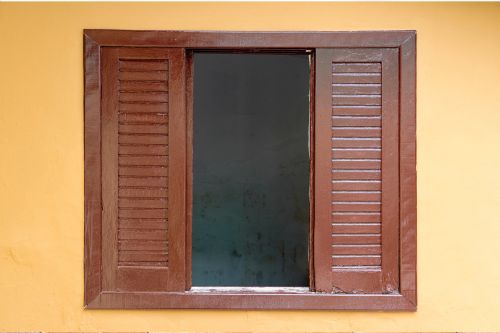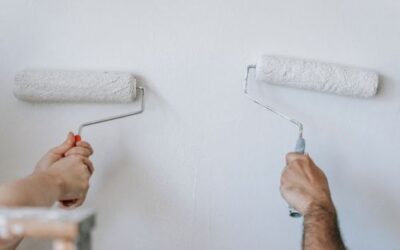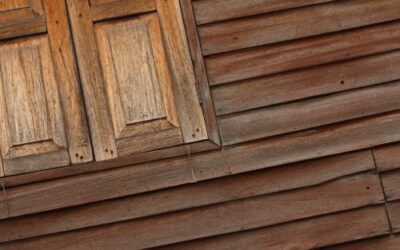Wood is a versatile and beautiful material, but maintaining it in humid climates can be challenging. Below, we offer a comprehensive guide on how to protect and care for your wood surfaces in high humidity environments, ensuring their durability and aesthetic appeal.
The importance of wood maintenance in humid climates
Deterioration factors
Humidity is one of the main enemies of wood. High humidity levels can cause the wood to expand and contract, leading to warping, cracking, and, in extreme cases, rot. Additionally, humid environments favor the growth of mold and mildew, which not only damage the wood but can also affect the health of the home’s inhabitants.
Benefits of regular maintenance
Maintaining wood properly not only preserves its appearance but also extends its lifespan and ensures its functionality. Regular maintenance can prevent costly damage and keep the wood in optimal condition, even in challenging climates.
Contact our professionals to paint your façade
The importance of wood maintenance in humid climates
Deterioration factors
Humidity is one of the main enemies of wood. High humidity levels can cause the wood to expand and contract, leading to warping, cracking, and, in extreme cases, rot. Additionally, humid environments favor the growth of mold and mildew, which not only damage the wood but can also affect the health of the home’s inhabitants.
Benefits of regular maintenance
Maintaining wood properly not only preserves its appearance but also extends its lifespan and ensures its functionality. Regular maintenance can prevent costly damage and keep the wood in optimal condition, even in challenging climates.
Choosing the right wood
Moisture-resistant woods
Choosing the right wood for humid climates is crucial. Some woods are naturally more resistant to moisture and deterioration than others. Recommended options include:
- Cedar: Known for its natural resistance to moisture and mold.
- Teak: Highly moisture-resistant, ideal for outdoor furniture and decks.
- Ipé: An extremely dense tropical wood resistant to moisture and insects.
A detailed study on the durability of different wood types in humid environments can be found here.
Wood treatments
Even moisture-resistant woods benefit from additional treatments. Sealers and varnishes provide a protective layer that helps repel water and prevent moisture damage.
Protection and maintenance techniques
Sealing and varnishing
Applying a suitable sealer or varnish is one of the best ways to protect wood against moisture. These products create a waterproof barrier that prevents water absorption.
Steps for sealing and varnishing
- Cleaning: Ensure the surface is clean and dry before applying any product.
- Sanding: Sand the wood to remove imperfections and open the pores, allowing better sealer adherence.
- Sealer application: Apply a uniform coat of sealer with a brush or roller. Let it dry according to the manufacturer’s instructions.
- Varnishing: Apply one or more coats of varnish, allowing each coat to dry completely between applications.
Ventilation and humidity control
Maintaining good ventilation and controlling humidity levels in the environment are essential measures for protecting wood.
Ventilation tips
- Use dehumidifiers: These devices help keep humidity levels under control, especially indoors.
- Windows and exhaust fans: Ensure areas with wood are well-ventilated. Install exhaust fans in bathrooms and kitchens to reduce humidity.
Regular cleaning and maintenance
Cleaning wood surfaces
Regular cleaning is essential to keep wood in good condition. Use cleaning products specifically designed for wood and avoid excessive use of water.
Cleaning process
- Dust regularly: Use a soft cloth to remove dust from the surface.
- Deep cleaning: Use a wood cleaner every few months to remove accumulated dirt.
- Complete drying: Ensure the wood is completely dry after cleaning to avoid moisture absorption.
Damage inspection
Conduct periodic inspections to identify signs of damage, such as cracks, mold, or moisture stains. Address these issues immediately to prevent further damage.
Preventing common problems
Mold protection
Mold can be a severe problem in humid climates. Keeping wood dry and well-ventilated is key to preventing its growth.
Mold solutions
- Mold-resistant paints and sealers: Use specific products that contain antifungal agents.
- Natural disinfectants: Clean affected areas with a solution of vinegar and water to remove mold spores.
Repairing cracks and deformations
Cracks and deformations can be symptoms of more severe issues caused by moisture.
Effective repairs
- Filling cracks: Use wood filler to fill cracks and sand gently after it has dried.
- Structural reinforcement: In cases of severe deformations, it may be necessary to reinforce the wood structure or replace damaged sections.
In conclusion, proper wood maintenance in humid climates is essential to preserve its beauty and functionality. From selecting moisture-resistant woods to the application of protective treatments and implementing cleaning and maintenance practices, there are many ways to ensure that your wood surfaces remain in excellent condition. By following these practical tips, you can enjoy the durability and charm of wood, even in the most challenging climates.
Other publications that may interest you
Colours that increase the feeling of space in small houses
You don't need to tear down partitions or do a complete renovation to make your house look bigger. In many cases, paint can completely transform the perception of space. Choosing the right colours not only brings harmony and light, but also creates the illusion of...
Differences between matt, satin and gloss paint: which is best for your home?
When we think of painting our house, we usually think of colours. But there is another equally important detail that can completely change the result: the paint finish. Choosing between matt, satin or gloss paint not only affects the aesthetics, but also the...
Basic care to extend the service life of exterior wood
Discover how to protect and maintain outdoor wood Wood is a warm, elegant and natural material, ideal for terraces, windows, pergolas or outdoor furniture. But in order to preserve its beauty and functionality, it needs specific care against the aggressions of the...




